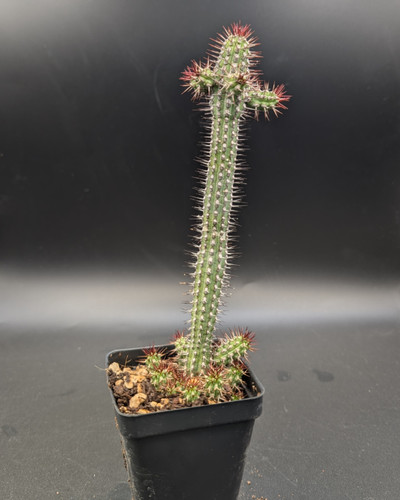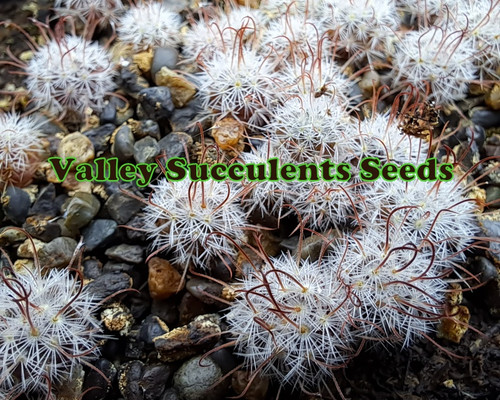Pot Size: 2.5"
Accepted Scientific Name: Euphorbia baloensis
Origin and Habitat:
Euphorbia baloensis is a rare succulent species native to Somalia, where it grows in arid, rocky habitats with minimal rainfall. The region is marked by extreme heat, sharp seasonal droughts, and nutrient-poor soils. This species has adapted by developing thick, fleshy stems that store water and a compact growth form that minimizes moisture loss. Its natural environment also exposes it to intense sunlight, making it well-suited for cultivation under bright, dry conditions. Being highly localized, it is considered an uncommon plant outside its native range and is often prized by collectors for its unusual form and rarity.
Description:
Euphorbia baloensis is a small, slow-growing succulent that usually reaches 4 to 8 inches tall and 3 to 5 inches wide. It forms upright, ribbed, columnar stems with a gray-green surface and small tubercles along the ribs. These stems may branch sparingly, giving the plant a clustered appearance over time. Like many Euphorbia species, it produces tiny, inconspicuous cyathia (specialized Euphorbia flowers), which are yellow to greenish in color and appear near the stem tips. Its unique sculptural form makes it especially attractive in pots or rock gardens.
Cultivation:
Zone: Best suited for USDA Zones 10–11; can be grown indoors in cooler climates.
Temperature: Ideal growth occurs between 18–28°C. Protect from temperatures below 10°C.
Growth Rate: Very slow-growing, making it well-suited for container culture.
Soil: Requires well-drained soil with pumice for aeration; avoid dense or water-retentive mixes.
Watering: Water sparingly in the growing season, allowing soil to dry completely between waterings. Keep nearly dry in winter dormancy.
Fertilizing: Apply a diluted, balanced liquid fertilizer every 2–3 weeks during active growth. Avoid fertilizing during dormancy.
Light: Prefers full sun to very bright light. Indoors, place in the sunniest window or under strong grow lights.
Pests and Diseases: Susceptible to mealybugs and spider mites if conditions are too humid. Overwatering may lead to root or stem rot.
Propagation:
Propagated primarily by cuttings, which should be allowed to callus before planting in dry, well-draining soil. Seed propagation is possible but uncommon due to the rarity of seed availability.







